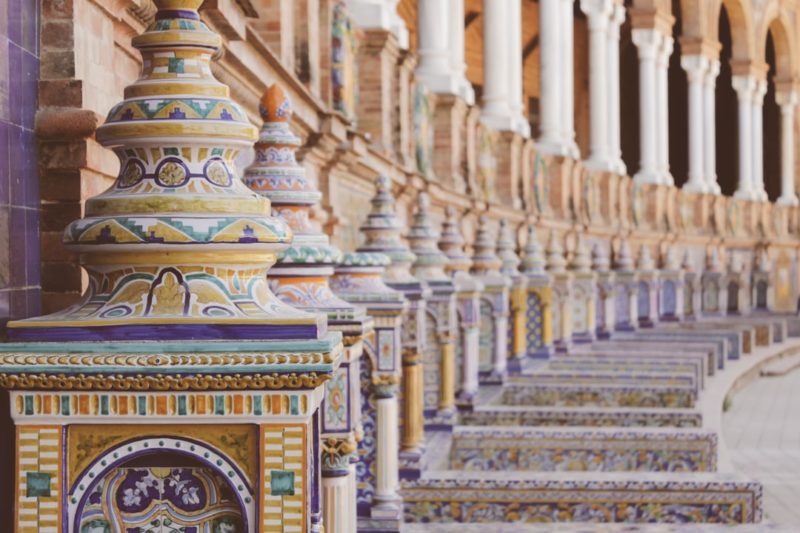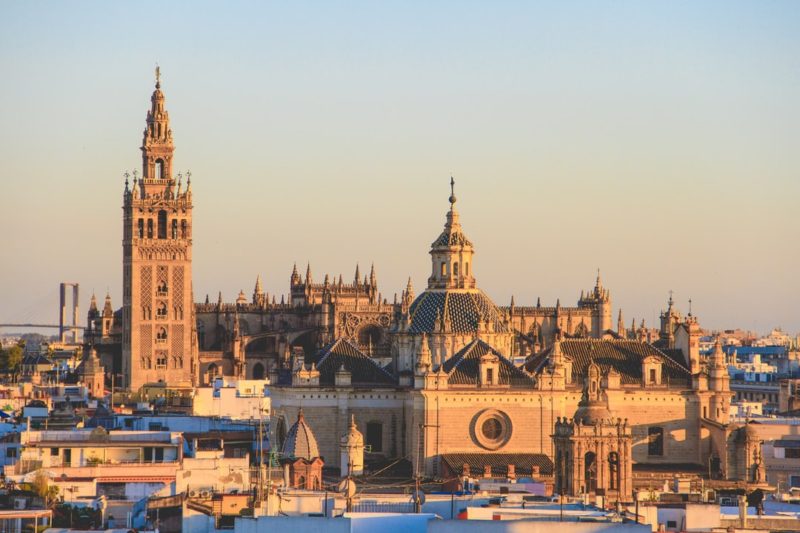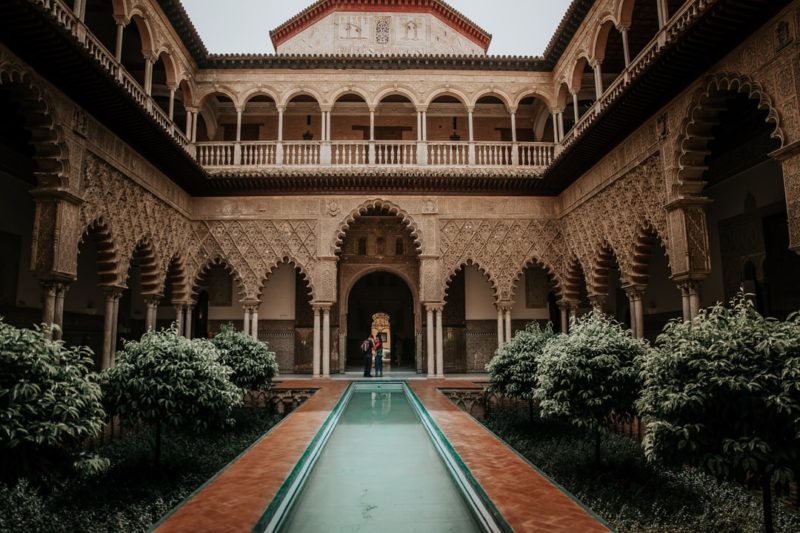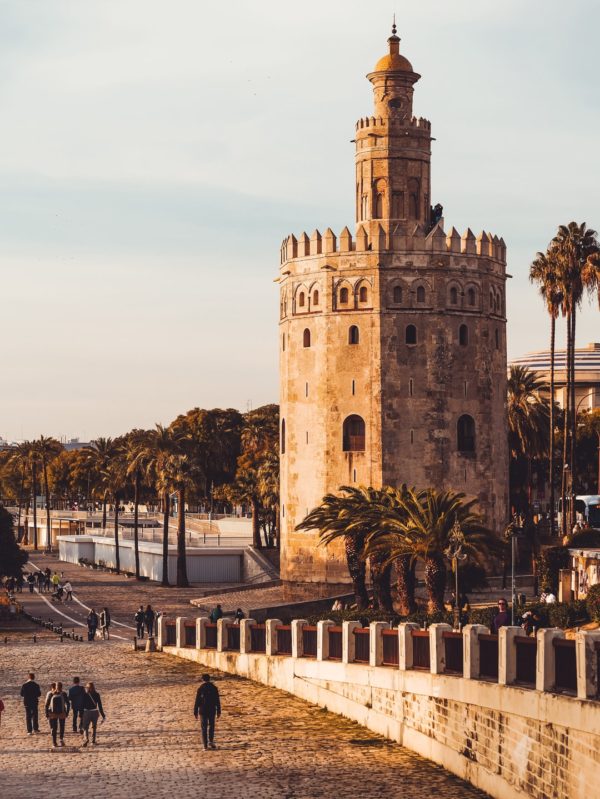Seville is a great year-round vacation destination. The city is attractive and accessible to tourists thanks to the Seville-San Pablo airport located relatively close to the city center. The capital of Andalusia offers us an extraordinary gastronomic experience, even winter-friendly weather, and original architecture. Hence the colorful flamenco and the controversial corrida were born. What is worth seeing when we decide that it is Seville our next travel destination?
Plaza de España
An extremely photogenic square located in Maria Luisa Park. The place attracts crowds of tourists and locals in love, at any time of the day or night. A large central fountain, illuminated after dark, a canal on which you can take a boat ride, and thousands of colorful azulejos will make you want to come back there during your stay. The park is an ideal place for a respite among greenery and the quiet murmuring of water. We can observe colorful parrots in it, and the possibility of a horse-drawn carriage ride awaits. Plaza de España is a place full of colors and life, also in winter. In Plaza América, also in the park area, there is the Archaeological Museum and the Museum of Daily Life. Admission 1.5 euros, free for citizens of the European Union. It is best to get off at the Prado de San Sebastián metro station.
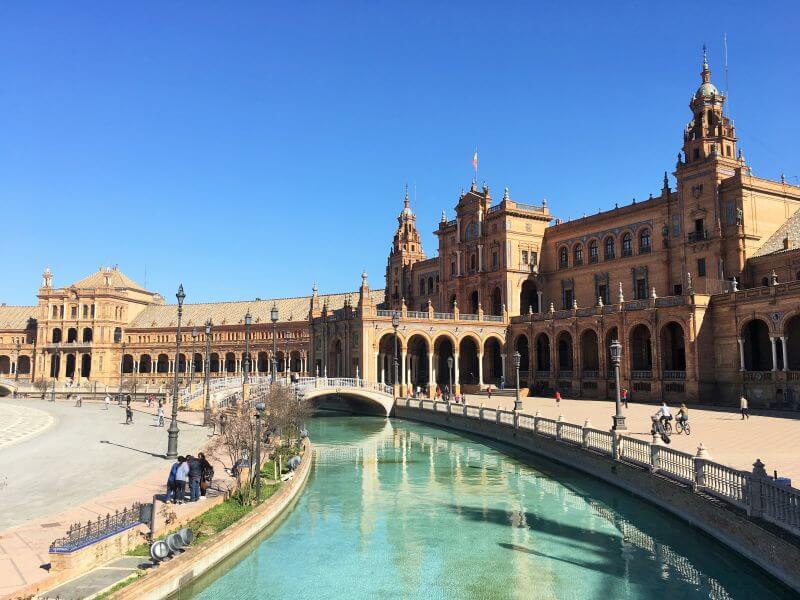
Cathedral and Giralda, Seville
The Seville Cathedral makes a great impression even on those who are not interested in sacred architecture. It is the largest Gothic temple in the world and one of the largest in general. It is included in the UNESCO World Heritage List. In the second half of the 12th century, in the place of the cathedral, there was a mosque, the remains of which are the Orange Garden and the Giralda (a former minaret). The construction of the facility that we can admire now began at the beginning of the 15th century and took nearly 100 years. It’s worth paying 10 euros admission to see, among others the tomb of Christopher Columbus, the unique Main Altar (consisting of about 1000 figures!), or climb the tower. At the time of construction, the Giralda was the tallest structure of this type in the world. What makes it special is that there are no stairs in it, but a climbing road that used to be accessible on horseback.
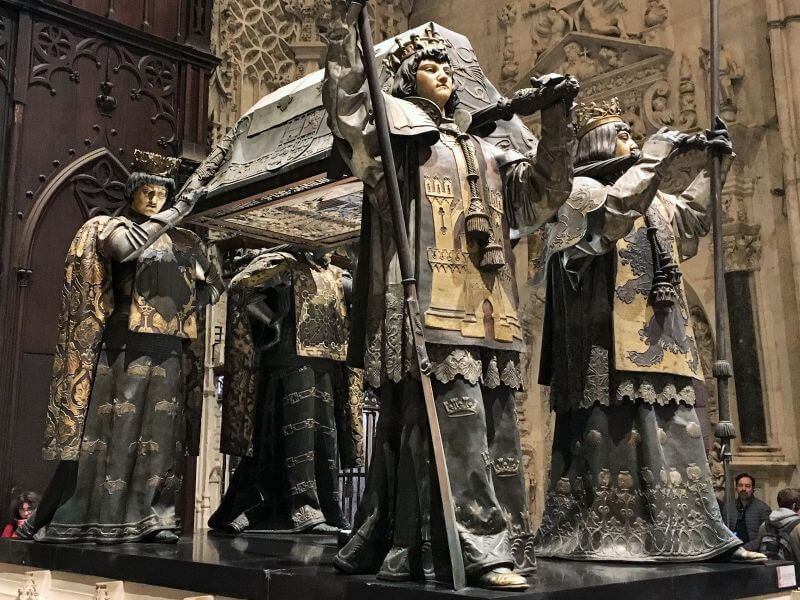
Alcázar, Seville
Originally built as the seat of Arab rulers, later taken over and rebuilt by Christian rulers. It is a great example of unique Andalusian architecture that has its origins in the turbulent history of this beautiful land. Like the nearby cathedral, the palace is on the UNESCO list. Some tourists being there for the first time may have a feeling of déjà vu because the interiors played in several productions, such as „Game of Thrones” or „Kingdom of Heaven”. The Alcázar has been rebuilt many times and today is a mixture of many styles. However, it remains one of the most beautiful examples of Mudéjar buildings, i.e. medieval architecture modeled on the Moorish style of the Iberian Peninsula. It is worth getting lost in the numerous rooms and corridors of the palace and then relaxing in the beautiful gardens.
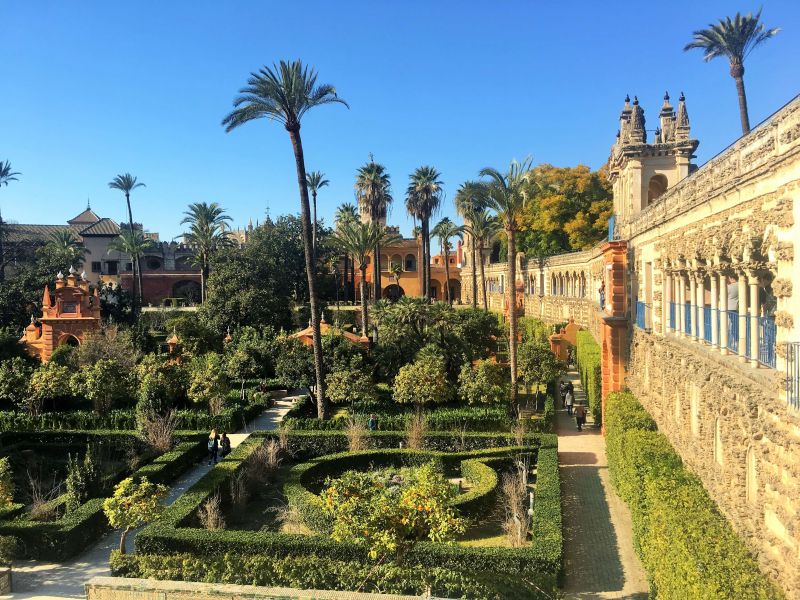
Torre del Oro
The Golden Tower, standing on the bank of the Guadalquivir River. It was established in the thirteenth century and took its name, according to one version, from the gold that was stored in it, and according to another version from the gold-plated azulejos with which it was clad. Currently, there is a small Maritime Museum inside. From the top, there is a view worth a climb, especially of the cathedral. Admission is 3 euro, free on Mondays. In the vicinity of the Golden Tower, there is a very attractive section of the promenade by the river, with a great panorama of the other bank of the Guadalquivir. We can make the walk more attractive with a stop in one of the cafes, admiring the unusual play of colors during the sunset. The Puerta Jerez metro station is nearby.
Metropol Parasol
It is also often called Setas de Sevilla (meaning mushrooms) because of its original shape. Relatively young construction, because it was built in 2011, is located in Encarnación square and was made of wood. You can climb on it, it costs 5 euros. In the basement there is the Antiquarium, i.e. secured Roman remains discovered during the construction of mushrooms. The square is one of Seville’s favorite meeting places. On the stairs of the building, especially in the evening, we can meet crowds of chatty youth, and the surrounding restaurants and bars are usually filled to the brim.
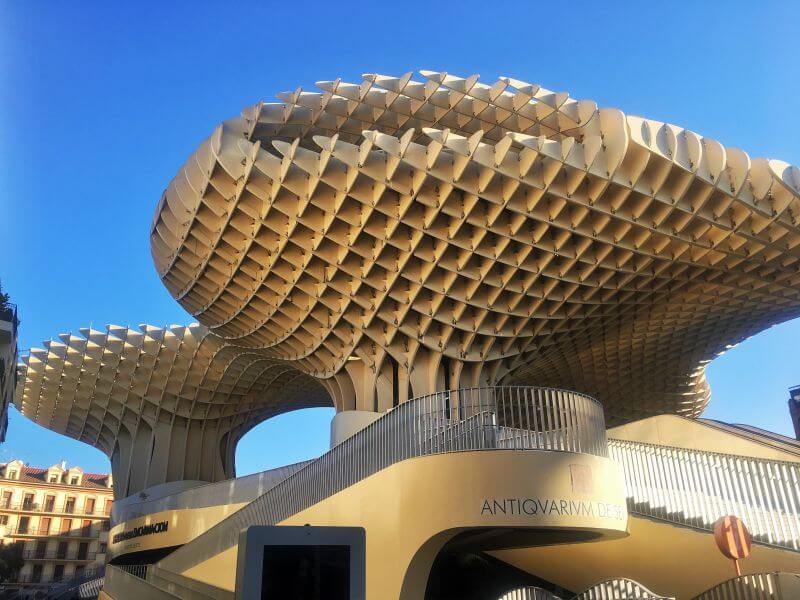
Palaces, Seville
Depending on the amount of free time and the wealth of your wallet, it is worth visiting at least one of Seville’s magnificent palaces. Especially noteworthy are: Palacio de Lebrija, Palacio Las Dueñas, Casa de Pilatos. The first one draws attention to unique mosaics from the Roman era, which were brought here from the ruins of the Roman city of Italica, located a few kilometers from Seville.
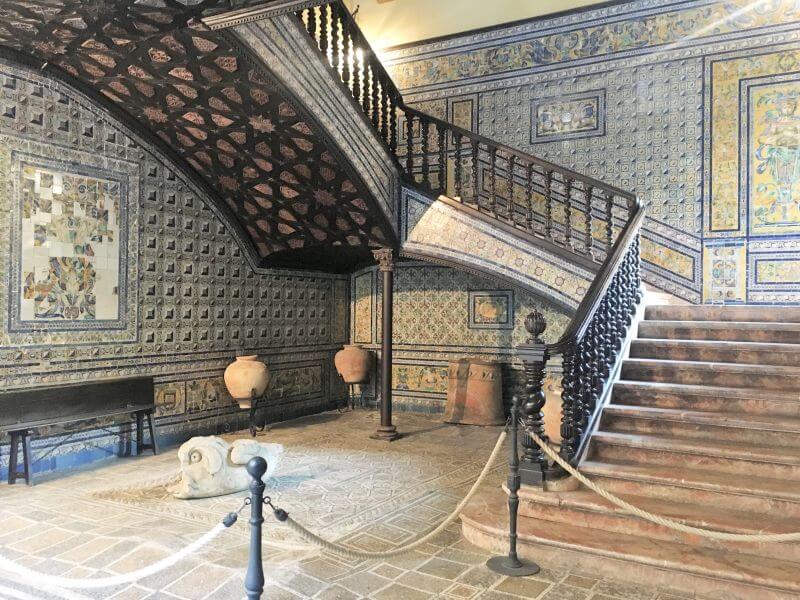
Las Dueñas has an impressive collection of paintings, sculptures, and furniture. The palace also includes a wonderful garden where you can relax from the hustle and bustle or heat. The facility was made available to tourists only in 2016, after the death of its owner, Princess Alba. She was a colorful character with a fortune valued at EUR 3 billion. Her full name was so long (longer than that of the British Queen) that it was added to the Guinness Book of Records!
The last palace is probably the most visited by tourists. Perhaps this is due to the fact that quite often it was the setting of famous films such as: „Lawrence of Arabia”, „Harem”, „1492: Conquest of Paradise „, „Kingdom of Heaven” or ” Knight and Day”. The palace is distinguished by a unique combination of the styles of the Italian Renaissance and the Spanish Mudéjar.
